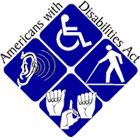When is an ADA Accommodation ‘Reasonable’? Seeing is Believing
 Now, this is a good idea. Let’s say you have an employee who is returning from an injury. The Americans with Disabilities Act (ADA) requires you to offer her a “reasonable” accommodation, but you want to make sure the accommodation is safe. So you decide to have the employee demonstrate that accommodation to see for yourself. That’s a smart move … just make sure you follow through on the demonstration.
Now, this is a good idea. Let’s say you have an employee who is returning from an injury. The Americans with Disabilities Act (ADA) requires you to offer her a “reasonable” accommodation, but you want to make sure the accommodation is safe. So you decide to have the employee demonstrate that accommodation to see for yourself. That’s a smart move … just make sure you follow through on the demonstration.
Case in point: Cindy English, an assembler at a General Electric plant in Indiana, suffered a rotator cuff injury that prevented her from performing above-the-shoulder tasks. That wasn’t an issue until two years later when she was awarded a promotion to a repair operator job that required above-the-shoulder work.
GE’s medical staff said her shoulder restriction prevented her from doing the job’s essential functions. But Cindy argued that she could do the job just fine by standing on a three-step stool. In response, GE set up a demonstration to see if the stool was a reasonable accommodation.
But on the morning of the demonstration, GE cancelled it, saying the stool would be a safety hazard in the close quarters of  the assembly line. Thus, no promotion.
the assembly line. Thus, no promotion.
Cindy sued GE, saying the company failed to engage in a good-faith interactive process and failed to accommodate her disability. GE defended itself, claiming her accommodation just wasn’t reasonable.
The result: The court sided with the employee and sent the case to the jury to decide whether GE “prematurely ended,” the interactive process that’s required under the ADA.
As the court noted, “the scheduled demonstration could have definitively shown that GE could not safely accommodate Ms. English’s disability, or it might have proven to GE that it could indeed provide Ms. English an accommodation. But unfortunately, GE chose not to go through with the demonstration, and this litigation ensued.” (English v. Gen. Elec. Co., 2014 BL 61730, S.D. Ind., 3/6/14)
3 Lessons Learned … Without Going to Court
- Schedule demonstrations. The court really seemed to like the idea that GE was making good-faith efforts to accommodate the employee by scheduling a demonstration of the proposed accommodation.
- Don’t cancel. But, cancelling it was a bad idea.
- Watch closely. With a simple demonstration, the answer to the question “is this a reasonable accommodation” will be right in front of you. Oh, GE you were so close to avoiding liability if you had just followed through with the demonstration.






